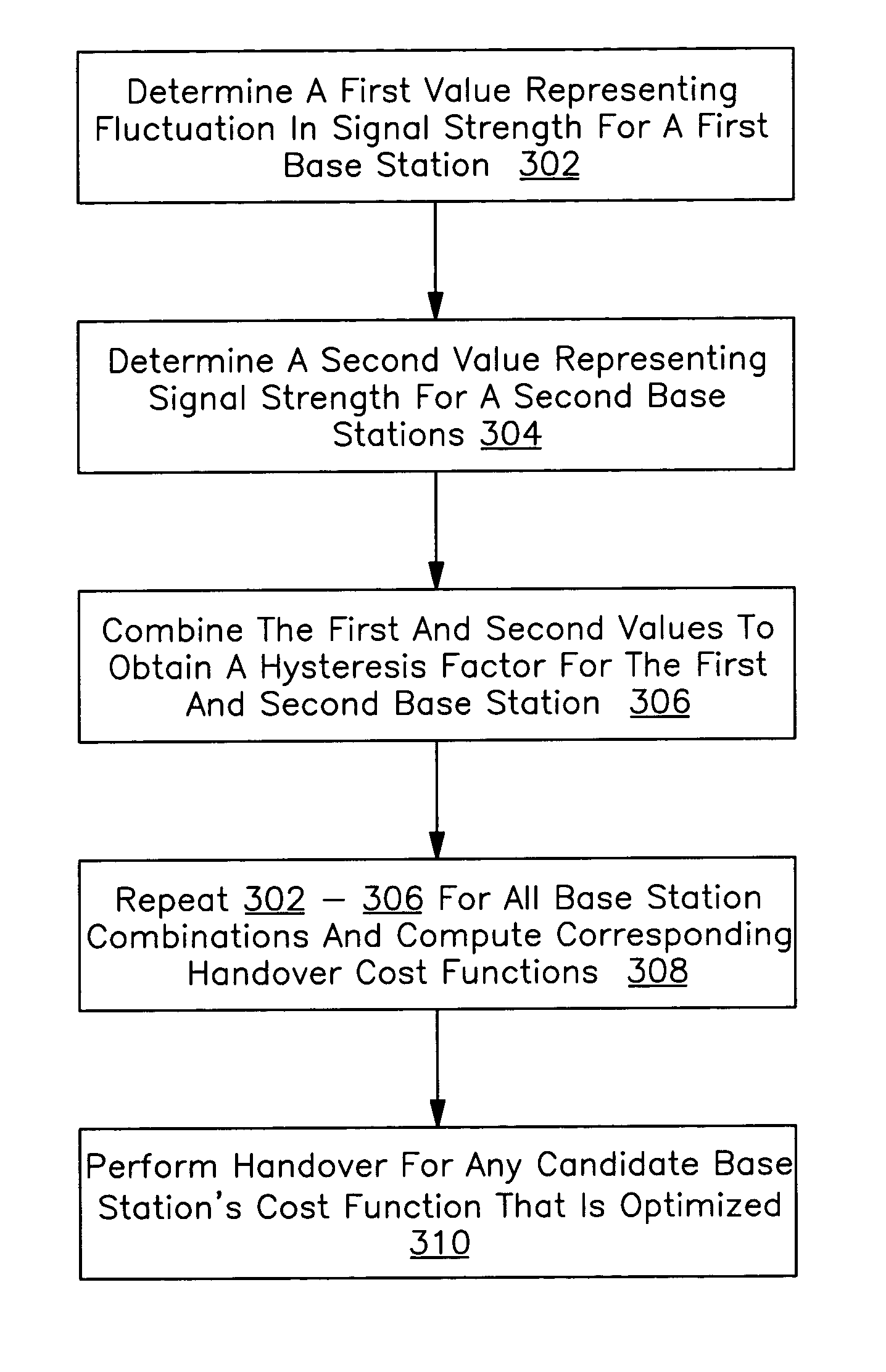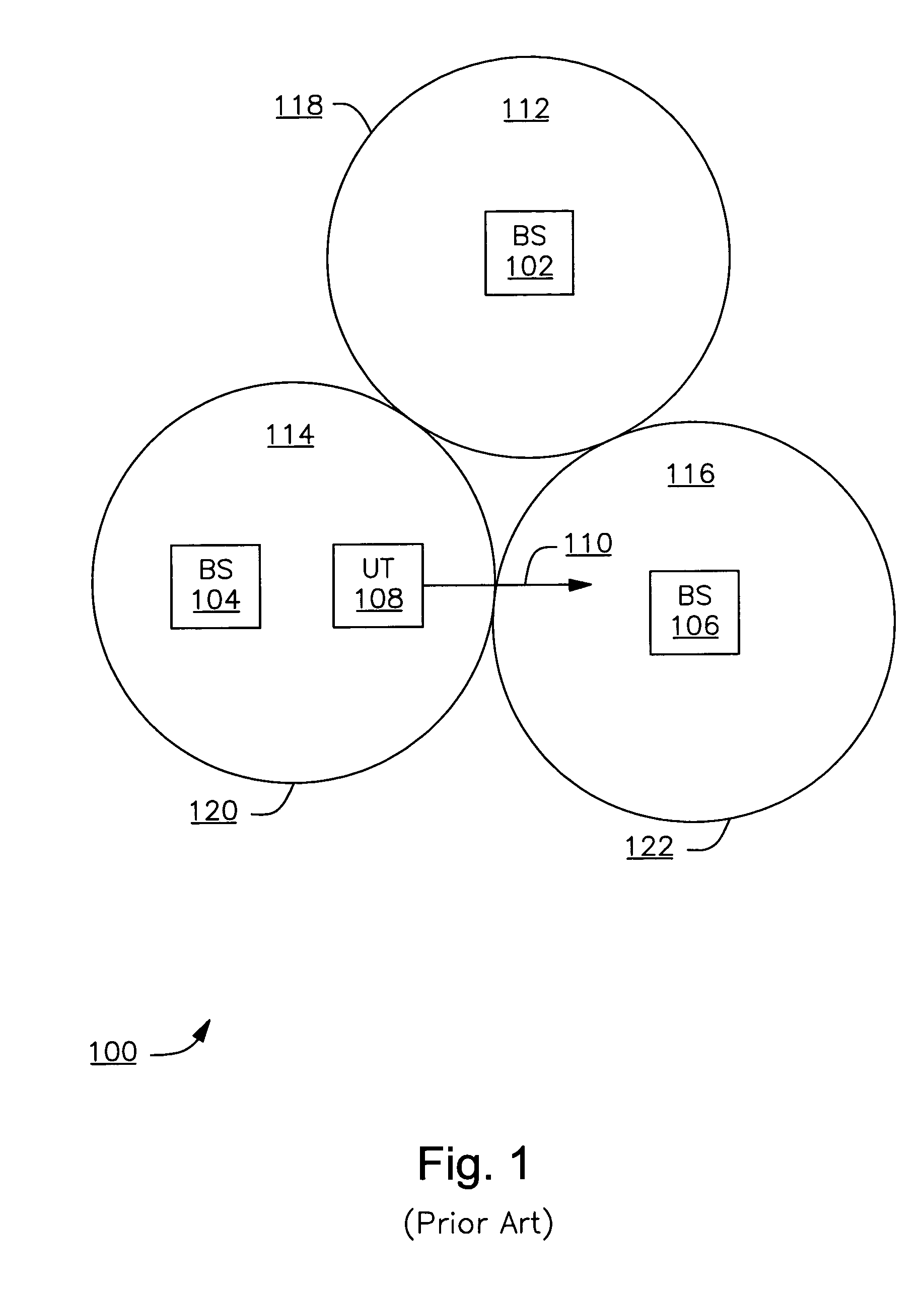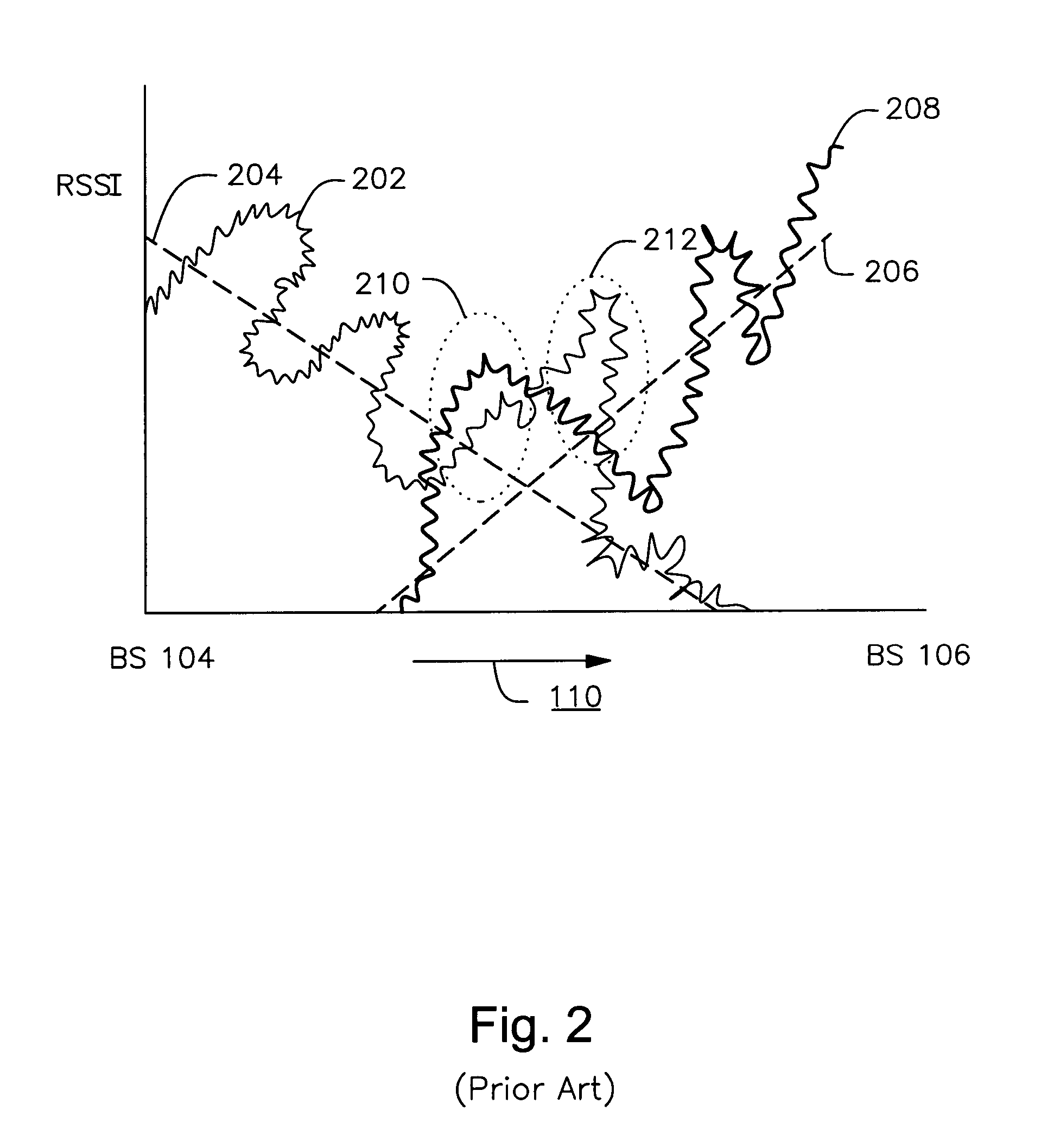Adaptive determination of hysteresis for facilitating base station selection, including handover, in a wireless communication system
- Summary
- Abstract
- Description
- Claims
- Application Information
AI Technical Summary
Benefits of technology
Problems solved by technology
Method used
Image
Examples
Embodiment Construction
[0027]The present invention provides a method and apparatus for facilitating initial base station selection and / or handover (collectively referred to herein as base station selection). In accordance with one aspect, hysteresis is adaptively determined as a function of the variance of receive signal strength. In turn, an adaptive hysteresis factor can be obtained and used for a subsequent handover decision, for example, based on a cost function that takes into account the hysteresis. In accordance with another aspect, base station selection takes into account a set of one or more selection criteria (e.g., distance and base station load) in addition to signal strength and hysteresis information to select a base station.
[0028]In the following description, numerous specific details are set forth. However, it is understood that embodiments of the invention may be practiced without these specific details. In other instances, well-known structures and techniques have not been shown in deta...
PUM
 Login to View More
Login to View More Abstract
Description
Claims
Application Information
 Login to View More
Login to View More - R&D
- Intellectual Property
- Life Sciences
- Materials
- Tech Scout
- Unparalleled Data Quality
- Higher Quality Content
- 60% Fewer Hallucinations
Browse by: Latest US Patents, China's latest patents, Technical Efficacy Thesaurus, Application Domain, Technology Topic, Popular Technical Reports.
© 2025 PatSnap. All rights reserved.Legal|Privacy policy|Modern Slavery Act Transparency Statement|Sitemap|About US| Contact US: help@patsnap.com



